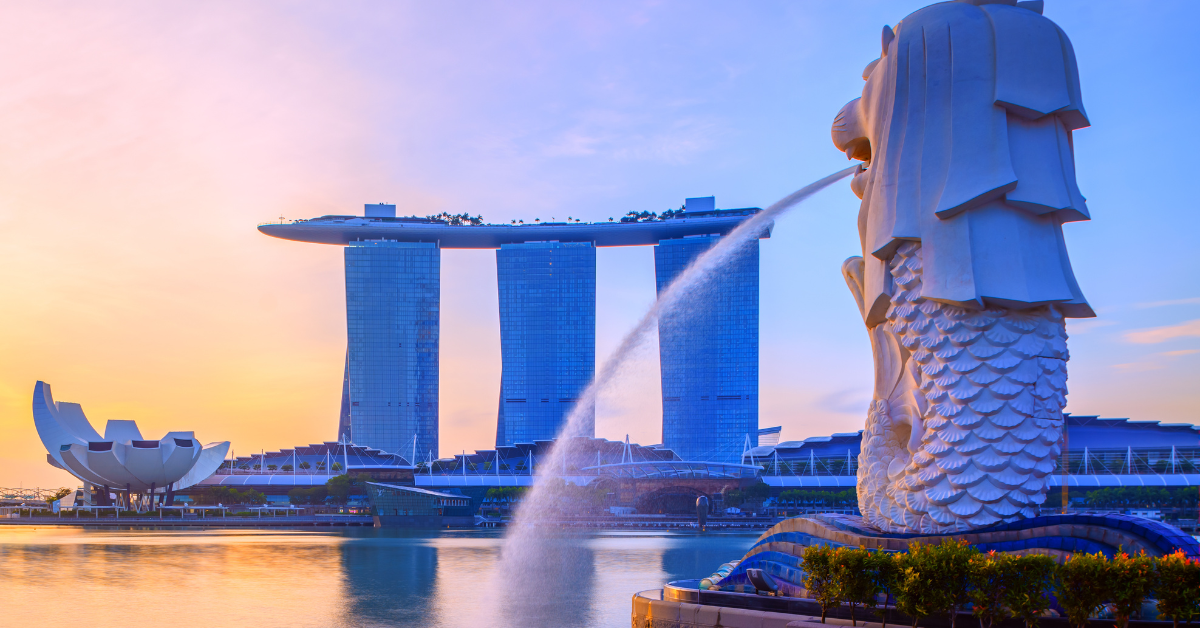The official Chinese character notation for Singapore is “新加坡”, adopted in 1972. However, historical records show multiple variations such as 新賀堀 and 新嘉坡. Beyond its linguistic history, Japanese people today associate Singapore with cleanliness, safety, and its role as a global business hub.
The Evolution of Singapore’s Chinese Character Notation
The official Chinese character notation for Singapore is “新加坡”, established in 1972. Prior to this, there was no standardized form, and various phonetic renderings in Chinese characters were used. This was true not only in Japan but also in Chinese and Taiwanese documents, reflecting linguistic fluctuations.
Below is a summary of major notations:
| Notation | Usage/Source | Features |
|---|---|---|
| 新加坡 | Official since 1972, newspapers and government documents | Current standard |
| 新賀堀 | Yukichi Fukuzawa’s “Sekai Kunizukushi” | Unique to Japan |
| 新嘉坡 | Qing dynasty documents, Taiwan records | Common in Chinese texts |
| 新嘉玻 | Modern commercial records | Alternative to “坡” |
| 新保彌 | Limited regional documents | Closer phonetic match |
| 新嘉波 | Phonetic variant | Uses “波” as substitution |
This shows that there was considerable fluctuation before standardization. Today, “新加坡” is firmly established and consistently used in tourism guides, newspapers, and official contexts.
The Tourist Image of Singapore for Japanese People
One of the strongest impressions Japanese people have of Singapore is its appeal as a tourist destination. The perception of being “clean and safe” provides travelers with a strong sense of security. Streets are remarkably free of litter, and public safety is excellent.
Famous landmarks include the Merlion statue, Marina Bay Sands, and Gardens by the Bay. In addition, Singapore’s multi-ethnic diversity offers a cultural experience that is highly valued by tourists. Places like Chinatown, Little India, and Arab Street allow visitors to immerse themselves in different cultures within a short span of time.
The features of tourism can be summarized as follows:
| Feature | Details |
|---|---|
| Cleanliness | Very little litter, hygienic environment |
| Safety | Relatively safe to walk even at night |
| Iconic attractions | Merlion, Marina Bay Sands |
| Multi-cultural experiences | Chinatown, Little India, Arab Street |
Thus, for Japanese tourists, Singapore is widely seen as a “comfortable and safe overseas destination”.
Singapore as a Business City
Singapore is strongly recognized by Japanese people as an Asian business hub. It serves as a center for finance, logistics, and trade, with many Japanese corporations setting up regional headquarters there.
Particularly, its role as a gateway to Southeast Asia is highly valued. Lower corporate tax rates compared to Japan and business-friendly policies for foreign companies also enhance its attractiveness.
Japanese perceptions of Singapore in terms of business are summarized below:
| Category | Japanese Evaluation |
|---|---|
| Corporate tax | Low tax rates, advantageous for companies |
| Infrastructure | Well-developed international airports and ports for efficient logistics |
| Public safety | Secure environment for expatriates and families |
| Political stability | Consistent policies that support business activities |
Together, these factors create an image of Singapore as a “trustworthy business hub” for Japanese companies and professionals.
Lifestyle and Education Impressions
Another strong impression Japanese people have of Singapore is its comfortable lifestyle. While the tropical climate is hot and humid year-round, buildings and public transportation are fully air-conditioned, ensuring comfort.
Japanese expatriate families often send their children to international schools or Japanese schools, and the education system receives high praise. Healthcare is also well established, with many hospitals offering services in English, which provides reassurance.
Japanese evaluations of daily life are summarized in the following table:
| Aspect | Features |
|---|---|
| Housing | High-rise condominiums with excellent facilities |
| Education | International schools and Japanese schools available |
| Healthcare | Many English-speaking hospitals provide安心 |
| Food culture | Multinational cuisine along with plenty of Japanese restaurants |
In this way, well-developed living and educational environments greatly contribute to the sense of security Japanese people feel in Singapore.
The Overall Image Japanese People Have of Singapore
Considering tourism, business, and lifestyle, the overall image Japanese people have of Singapore can be summed up as a “clean and safe international city”.
A final summary across different aspects is shown below:
| Aspect | Japanese Image |
|---|---|
| Tourism | Clean, safe, and offers multicultural experiences |
| Business | Reliable international hub |
| Lifestyle | Well-developed education, healthcare, and housing |
| Culture | Characterized by multi-ethnic coexistence |
From this table, it is clear that Singapore is seen as a multi-dimensional country with diverse attractions.
Conclusion
The Chinese character notation for Singapore, once varied and unstable, is now unified as “新加坡”, symbolizing historical and cultural connections between Japan and Singapore.
For Japanese people, Singapore is at once a tourist destination known for cleanliness and safety, a center of international business, and a city-state offering a comfortable living environment.
These overlapping qualities ensure that Singapore continues to be a special country for Japanese people—whether as a place to travel, conduct business, or build a lifestyle.






